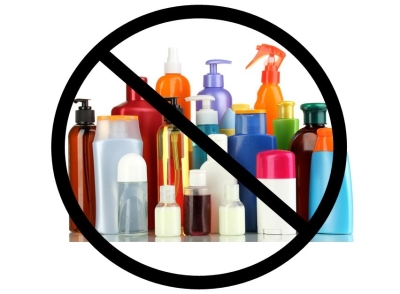
On January 14 the California State Assembly Committee on Environmental
Safety and Toxic passed the Toxic-Free Cosmetics Act,
AB 495, to ban 13 toxic chemicals including asbestos, lead, mercury and formaldehyde
from beauty and personal care products consumers use daily.
"We are talking about baby powder and powder makeup containing asbestos.
Facial creams containing mercury. Hair straighteners with formaldehyde,"
said Democratic Assembly Member Al Muratsuchi of Torrance, CA, who introduced the bill.
On January 16, 2020,
Environmental Working Group released news of extremely high amounts of asbestos being found in the
eye shadow of a widely sold children’s makeup kit. The lab found
that every gram of the eye shadow in the Princess Girl’s All-in-One
Deluxe Makeup Palette tested contained more than 4 million asbestos fiber
structures. This is just the latest news of asbestos contaminating imported
products marketed to children.
“It seems every time someone tests talc-based toys for the deadly
carcinogen [asbestos], they find it,” said EWG’s Senior Vice
President for Government Affairs Scott Faber, “Before parents buy
a makeup kit or any toy made with talc, they should seriously consider
that it could very well be contaminated with asbestos.”
The law governing the FDA’s oversight of cosmetic products, the
Federal Food, Drug, and Cosmetic Act (FD&C Act), has not been updated since it was first enacted in 1938. There are currently
no Federal requirements for any cosmetic manufacturer marketing products
to American consumers to test their products for safety.
California law on cosmetic safety is inadequate and mirrors federal law.
“Californians should be protected from unsafe products. A law to
do that was passed in 1996 but never implemented,” Susan Little,
senior advocate for California government affairs for EWG, said in a statement.
“AB 495 would update this law to make sure that cosmetics manufacturers
can no longer use some of the most toxic chemicals as ingredients in personal
care products sold in California.” The bill will also ensure that
when violations are found the attorney general can take legal action.
Opponents of AB 495, the Personal Care Products Council and the American
Chemistry Council, argue that it goes too far and could lead to the prohibition
of thousands of products that don’t pose health risks to consumers.
Industry groups balk at the idea of adding warning labels to talc-based
products and have “pressured governmental agencies to refrain from
listing [talc] as a carcinogen.”
Ten of the thirteen chemicals to be banned have been linked to breast cancer.
The full list of the chemicals that would be banned under the AB 495 Toxic-Free
Cosmetics Act, include:
- Asbestos (a carcinogen).
- Lead (a neurotoxin).
- Diethylhexyl and Dibutyl phthalate (a reproductive and developmental toxicant).
- Formaldehyde (a carcinogen).
- Paraformaldehyde (a carcinogen).
- Methylene glycol (a carcinogen).
- Quaternium-15 (carcinogenic chemicals).
- Mercury (neurotoxins).
- Two parabens – isobutylparaben, isopropylparaben, (reproductive and
developmental toxicants and hormone disruptors).
- M- and O- Phenylenediamine (a carcinogen).
- Long chain PFAS chemicals banned in the EU (carcinogens and developmental
toxicants).
More than 40 other nations including the European Union have restricted
the use of thousands of cosmetic ingredients. It’s time for Congress
to pass meaningful legislation banning these deadly chemicals and hold
corporations responsible for knowingly causing harm to consumers and their families.
If you're concerned how safe your products are, the EWG runs the site
Skin Deep, which allows you to type in products and receive a ranking of its toxicity
from 1-10, with 10 being quite toxic. It also has a scale for ingredient
concerns, like cancer causing, allergies and immunotoxicity, use restrictions.